Bicycle Tyre Tips
(This article relates to tyres with inner-tubes, please see our other articles for info on tubeless tyres!)
Bike Man Dan’s Top 5 Tyre Tips at a Glance
- Inflate your tyres regularly (at least once a month)
- Recommended pressure is written on the side of each tyre
- Before each ride check your tyres for embedded glass, cracks, gashes, holes and bulges.
- Use a track-pump for quick and effective inflation
Fill up on some of our handy tips so your tyres don’t let you down.
It’s obvious that without tyres on your bike it would be pretty uncomfortable to ride – but aside from comfort they also add traction and protect the wheel rims from scraping on the road surface.
If you ride your bike it’s worth accepting that some punctures are inevitable – others are avoidable and e hope this info will help you avoid those!
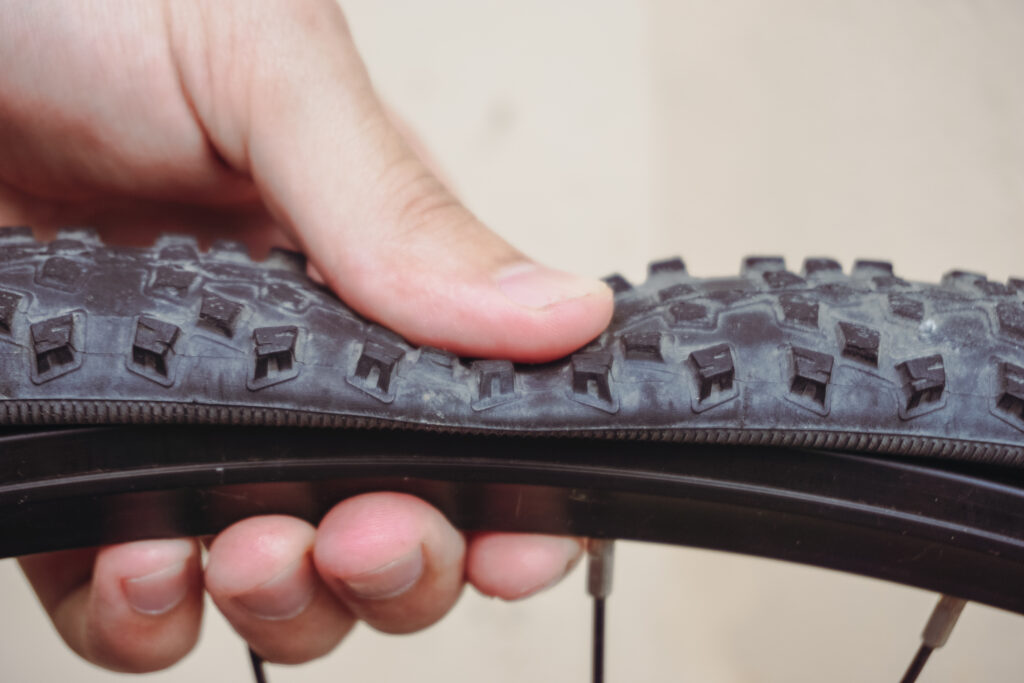
Don’t ride on under-inflated tyres.
Correct tyre pressure keeps the tyre from changing shape too much as you cycle – if you ride on even slightly under-inflated tyres for too long it’s possible to cause bigger (and very avoidable) problems.
- “Snakebite” punctures happen when hitting a pothole, pinching the tube between the road and the wheel rim
- Constant bending of the sidewall at the bead/rim can cause a hole to form and burst the tyre.
- The tyre can also “shift” around the wheel while riding, causing strain on the valve and tearing the innertube.
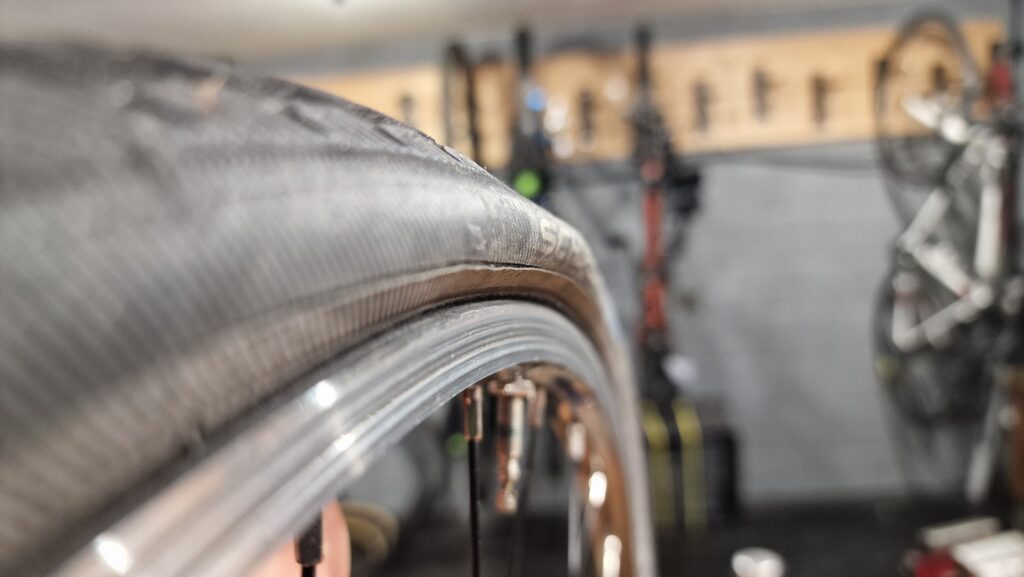
Inflation’s what you need
Surprisingly few people are aware that their tyres are constantly deflating – this happens very slowly due to air escaping through the rubber and the valve – even without a puncture! Low pressure can actually cause certain types of puncture so inflating them regularly is a must. Schwalbe recommends inflating your tyres once a month to keep them operating optimally.
GEEK ALERT: If you want to get scientific about it, we heard a theory that the smaller molecules (eg oxygen, hydrogen etc) escape through the walls of your tyres, leaving a higher relative concentration of the larger molecules such as Nitrogen. For this reason (assuming you don’t let all the air out) your tyres may deflate more slowly over time.
The right tools for the job
Most people are familiar with the “Old school” bicycle hand pump, however most modern tyres are rated for higher pressures which are nearly impossible to achieve with a hand pump alone. Car style foot pumps may be better but often won’t reach the pressure required.
A track pump leverages your body weight as well as a larger capacity, allowing you to inflate your tyres more quickly and to a higher pressure. We recommend that every cyclist should own and use a track pump as part of their routine bicycle maintenance.
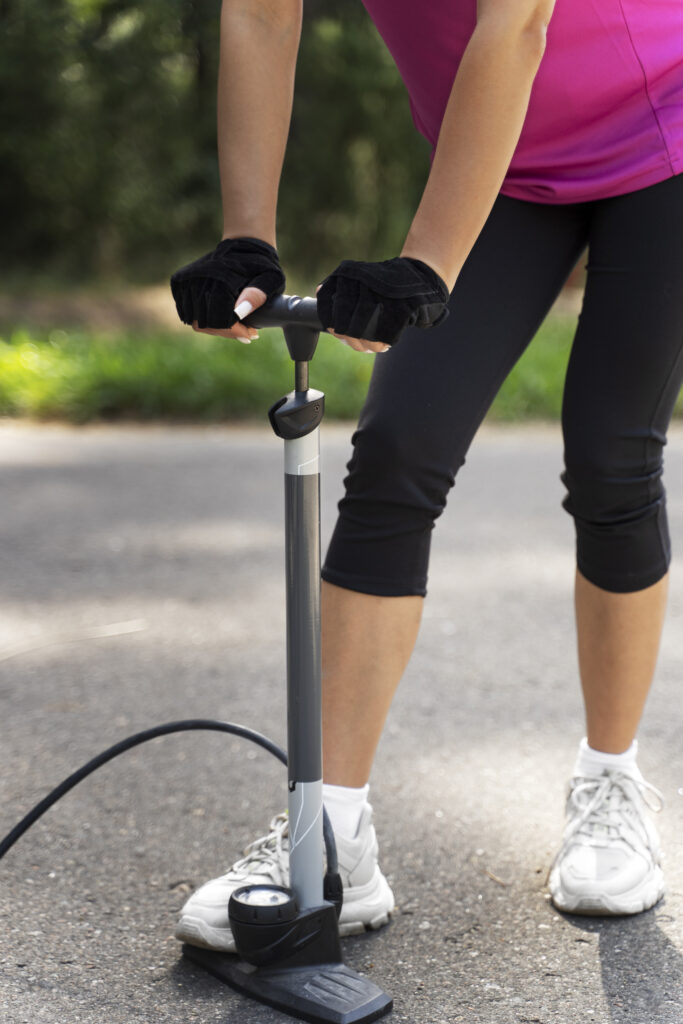
Some benefits of track pumps are:
- More durable
- Inflates more quickly and easily
- Easier to attach without causing damage to the valve
- Often come with a built in pressure gauge
- Can fit both valve types
TOP-TIP: Check our article about bicycle valve types to make sure you are preparing your valve properly before attaching the pump!
How much to inflate?
Every tyre has a specific pressure rating which is usually embossed on the side of the tyre. The guide pressure will often be listed in both BAR and PSI. Just make sure you’re using the same scale on your pump’s pressure gauge. The photo below is an example and your tyre may require anything from anywhere from 25 – 140 psi so make sure you check before you start to avoid under/over inflating.
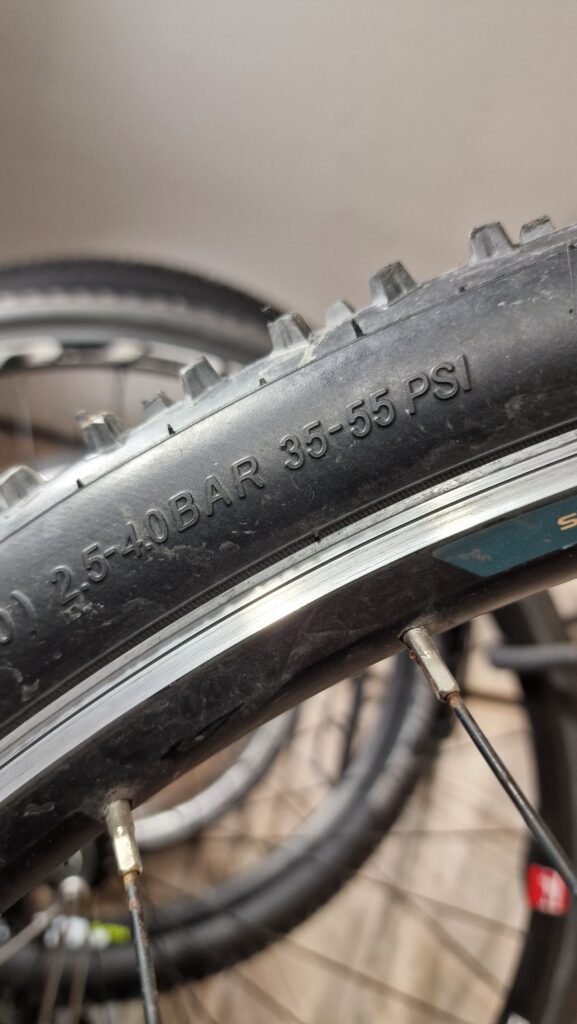
It’s best to go as high as possible for puncture resistance but you may want to go a little lower for comfort and increased rolling resistance.
Tyre health check
Have you ever thought about why tyres are called tyres? They have a hard life and most certainly don’t last forever without getting…”tired”! Glass, metal and other sharp objects, as well as general friction constantly cut and shave into your bike tyres causing gashes, slits, embedded stones or glass etc.
Sadly, glass doesn’t care how new your tyres are – we’ve seen nails go through brand new “puncture resistant” tyres so it’s best to get into the habit of giving them a visual check before each ride.
Schwalbe say that their tyres are good until you start to see the blue lining showing through. This would be far beyond the point where the tread has gone bald, so if you are doing alot of winter miles and need good traction we’d suggest replacing yours sooner.
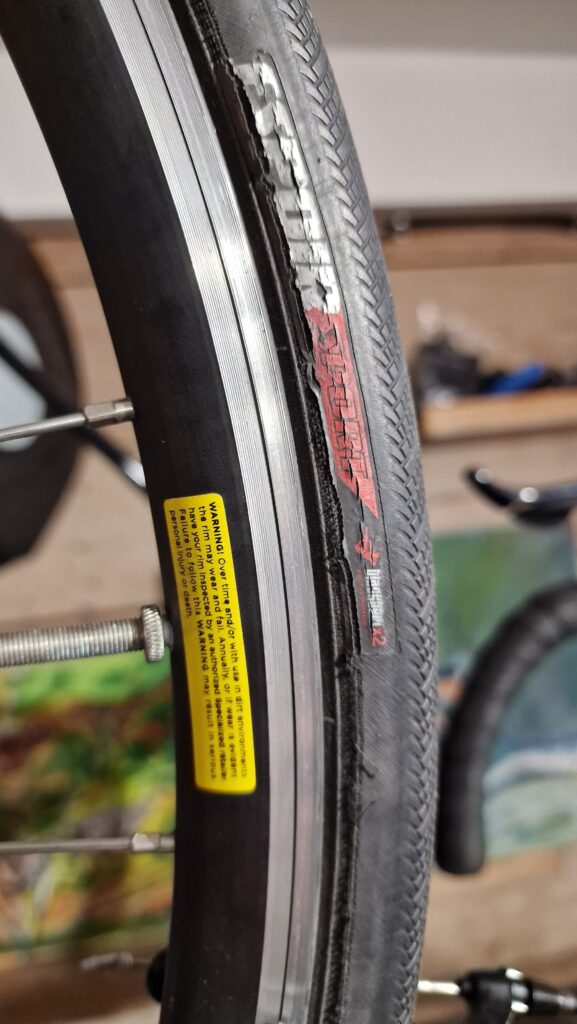
The rubber in older tyres can also perish, causing cracks in the side-wall. This can be made worse by riding on low pressure.
We hope these simple tips will help you keep rolling…
Don’t stop at tyres – the more you know about your bike the less hassle it will cause you.
Check out our other related articles to get the most out of your bike and even extend the time needed between services.




